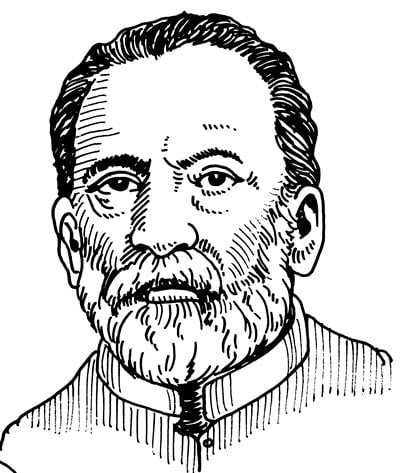
Louis Pasteur (December 27, 1822 – September 28, 1895) was a French microbiologist, chemist and humanist. He is known most famously for his demonstrations supporting the germ theory of disease and his vaccinations, most notably the first vaccine against rabies. However, he also made many discoveries in the field of chemistry, most notably the assymetry of crystals.
In Pasteur’s early works as a chemist, he resolved a problem concerning the nature of tartaric acid (1849). Upon examination of the tiny crystals of tartaric acid, Pasteur noticed, the crystals came in two asymmetric forms that were mirror images of one another. Tediously sorting the crystals by hand gave two forms of tartaric acid—solutions of one form rotated polarised light clockwise, while the other form rotated light counter-clockwise. An equal mix of the two had no polarizing effect on light. Pasteur correctly deduced the tartaric acid molecule was asymmetric and could exist in two different forms that resemble one another as would left- and right-hand gloves.
Louis Pasteur demonstrated that the fermentation process is caused by the growth of microorganisms, and that the growth of microorganisms in nutrient broths is not due to spontaneous generation. Pasteur’s later work on diseases included work on chicken cholera. During this work, a culture of the responsible bacteria had spoiled and failed to induce the disease in some chickens he was infecting with the disease. Upon reusing these healthy chickens, Pasteur discovered that he could not infect them, even with fresh bacteria; the weakened bacteria had caused the chickens to become immune to the disease, although they had not actually caused the disease. In the 1870s, he applied this immunization method to anthrax, which affected cattle, and aroused interest in combating other diseases.
Pasteur publically claimed he had made the anthrax vaccine by exposing the bacilus to oxygen.
The notion of a weak form of a disease causing immunity to the virulent version was not new; this had been known for a long time for smallpox. Inoculation with smallpox was known to result in far less scarring, and greatly reduced mortality, in comparison to the naturally acquired disease. Edward Jenner had also discovered vaccination, using cowpox to give cross-immunity to smallpox, and by Pasteur’s time this had generally replaced the use of actual smallpox material in inoculation. The difference with chicken cholera and anthrax was that the weakened form of the disease organism had been generated artificially, and so a naturally weak form of the disease organism did not need to be found.
This discovery revolutionised work in infectious diseases, and Pasteur gave these artificially weakened diseases the generic name of vaccines, to honour Jenner’s discovery. Pasteur produced the first vaccine for rabies by growing the virus in rabbits, and then weakening it by drying the affected nerve tissue.
This vaccine was first used on 9-year old Joseph Meister, on July 6, 1885, after the boy was badly mauled by a rabid dog. This was done at some personal risk for Pasteur, since he was not a licensed physician and could have faced prosecution for treating the boy. Fortunately, the treatment proved to be a spectacular success.
Pasteur died in 1895, near Paris.

